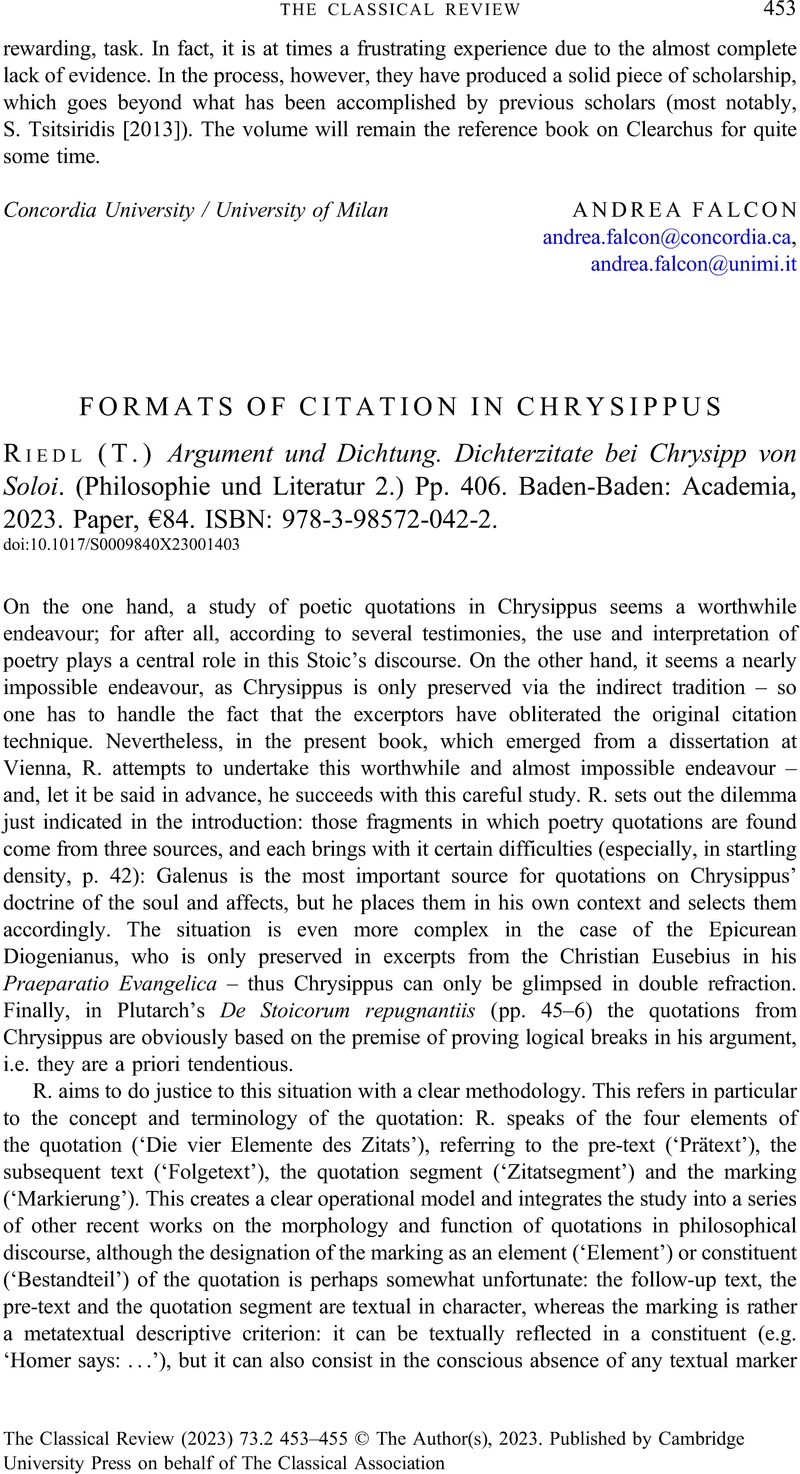No CrossRef data available.
Article contents
FORMATS OF CITATION IN CHRYSIPPUS - (T.) Riedl Argument und Dichtung. Dichterzitate bei Chrysipp von Soloi. (Philosophie und Literatur 2.) Pp. 406. Baden-Baden: Academia, 2023. Paper, €84. ISBN: 978-3-98572-042-2.
Review products
(T.) Riedl Argument und Dichtung. Dichterzitate bei Chrysipp von Soloi. (Philosophie und Literatur 2.) Pp. 406. Baden-Baden: Academia, 2023. Paper, €84. ISBN: 978-3-98572-042-2.
Published online by Cambridge University Press: 19 June 2023
Abstract
An abstract is not available for this content so a preview has been provided. Please use the Get access link above for information on how to access this content.

- Type
- Reviews
- Information
- Copyright
- Copyright © The Author(s), 2023. Published by Cambridge University Press on behalf of The Classical Association



